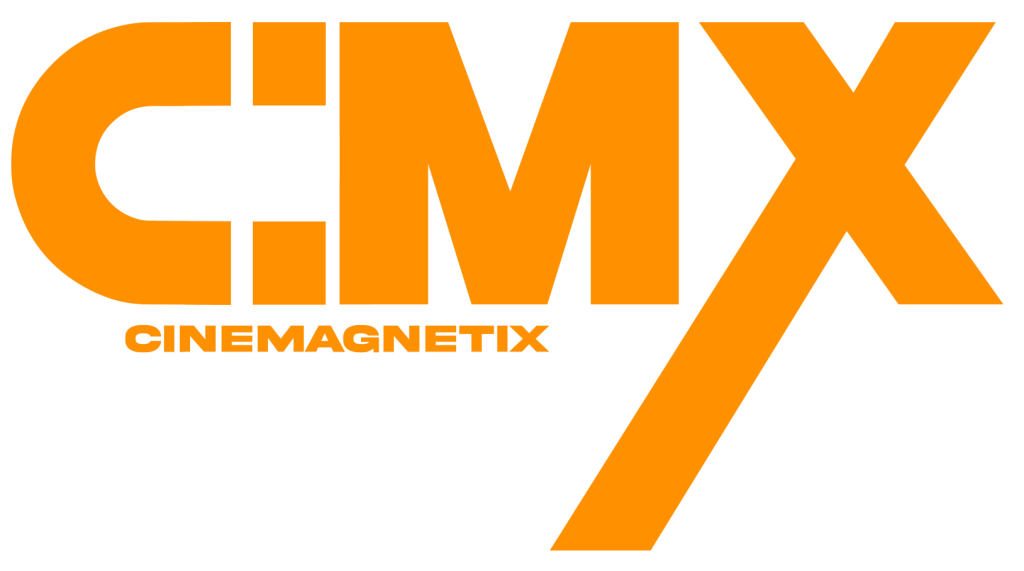Tools and Techniques for Engagement and Conversion
Sign Up for Our Free Weekly Newsletter
We’ll be in your inbox once a week with top business news, inspiring stories, best advice and exclusive reporting from Cinemagnetix – (CmX).

The article discusses how to achieve successful engagement and conversion online using a strategic approach and effective tools.
- It emphasizes understanding your audience and tailoring content to resonate with them.
- Content creation, SEO, social media, email marketing, and website design are all important aspects.
- The article also details low-cost tools you can leverage for each of these areas.
Key takeaways:
- Content is king: Create valuable and engaging content that resonates with your target audience.
- Optimize for search engines: Use SEO best practices to ensure your content is discoverable.
- Social media is a goldmine: Utilize social media platforms to connect with your audience and build a community.
- Email marketing is powerful: Personalized emails can significantly boost conversion rates.
- Website design matters: A user-friendly and mobile-optimized website is crucial.
- Track and analyze: Use analytics tools to measure the success of your efforts and make adjustments as needed.
Tools and Techniques for Engagement and Conversion
Engagement and conversion are pivotal elements of a successful online presence. They represent the journey of turning a casual visitor into a loyal customer or subscriber. This transformation is not incidental; it’s the result of strategic planning and the use of effective tools and techniques. To begin, understanding your audience is crucial. Utilizing analytics tools can provide insights into user behavior, preferences, and engagement patterns. These tools can range from Google Analytics to more niche software tailored to specific industries.
Content is king in the digital realm, and creating compelling, valuable content is essential for engagement. Techniques such as storytelling, interactive content, and educational materials can captivate an audience. Moreover, optimizing this content for search engines through SEO practices ensures that it reaches a wider audience. The use of keywords, meta descriptions, and quality backlinks are all part of this strategy.
Social media platforms are a goldmine for engagement. They offer tools for targeting specific demographics, creating interactive ads, and fostering community through groups and forums. Techniques for engagement on social media include consistent posting, engaging with followers through comments and messages, and using analytics to track performance.
Email marketing remains a powerful tool for conversion. Techniques such as personalized emails, segmentation, and A/B testing can significantly increase open rates and click-through rates. Tools like Mailchimp or Constant Contact provide robust platforms for managing email campaigns.
Conversion is often the result of a well-designed website. Tools for creating a user-friendly interface, such as WordPress or Adobe XD, are indispensable. Techniques for improving conversion rates include clear calls-to-action, fast loading times, and mobile optimization.
In the realm of e-commerce, tools like Shopify or Magento offer comprehensive solutions for managing an online store. Techniques for boosting conversion include high-quality product images, customer reviews, and easy checkout processes.
The use of analytics to measure the success of engagement and conversion strategies cannot be overstated. Tools that offer real-time data, heatmaps, and conversion funnels are essential for understanding what works and what doesn’t.
Real-world examples of successful engagement and conversion showcase the innovative strategies companies employ to connect with their audiences and drive business results.
For instance, Lego’s initiative, Lego Ideas, invites fans to submit their own designs, which can potentially become actual Lego sets if they receive enough community support. This strategy not only fosters deep engagement by involving customers in the product development process but also strengthens brand loyalty and drives sales.
Another example is Nike, which has mastered the art of brand engagement through its ‘Just Do It’ campaign, resonating with its audience’s values of motivation and empowerment. By aligning its brand identity with customer aspirations, Nike has created a dedicated customer base that actively engages with the brand and promotes it across various platforms.
In the digital summit space, SBC Digital created an immersive virtual event that mimicked a physical conference, complete with a lobby and breakout rooms. This approach made a strong first impression and provided a valuable and freeing experience for attendees, thereby increasing engagement and participation.
Amazon’s approach to personalization in its virtual summits showcases how understanding customer behavior can tailor interactions to enhance engagement. By leveraging data to provide personalized experiences, Amazon ensures that its services are relevant and appealing to its audience, leading to higher conversion rates.
In the realm of sustainability, cities around the world are implementing successful climate action initiatives. The C40 network highlights 100 cases of projects and approaches that have proven effective in member cities, demonstrating the potential for engagement and conversion in environmental efforts.
These examples illustrate the importance of understanding your audience and creating strategies that not only attract attention but also foster a deeper connection, leading to meaningful engagement and successful conversion. By learning from these real-world cases, businesses can develop their own innovative approaches to engage their customers and drive conversions effectively.
How to apply?
Applying successful engagement and conversion strategies to your business involves a multi-faceted approach tailored to your unique brand and audience. Begin by identifying the core values and interests of your target demographic. This understanding will inform your content creation, ensuring it resonates with your audience. For example, if your business is in the fitness industry, you might create motivational content that encourages a healthy lifestyle, much like Nike’s campaigns.
Next, leverage social media to build a community around your brand.
Engage with your audience by responding to comments, creating interactive content, and sharing user-generated content that showcases your products or services in real-life scenarios. This not only increases engagement but also provides social proof, which can be a powerful conversion tool.
Personalization is key in today’s market.
Use customer data to tailor your marketing efforts, from personalized email campaigns to customized product recommendations on your website. Tools like CRM software can help you track customer interactions and preferences, allowing for more targeted and effective marketing strategies.
Optimize your website for conversion by ensuring it is user-friendly and mobile-responsive.
Clear calls-to-action, streamlined navigation, and fast loading times are crucial. Consider implementing live chat support to assist visitors in real-time, which can increase the likelihood of conversion.
Incorporate storytelling into your brand narrative. Share the journey of your business, the challenges you’ve overcome, and the successes you’ve achieved. This creates an emotional connection with your audience, which can lead to increased loyalty and conversion.
Finally, measure the effectiveness of your strategies using analytics tools.
Track metrics such as engagement rates, conversion rates, and ROI to understand what’s working and where there’s room for improvement. Continuously refine your strategies based on this data to optimize engagement and conversion over time.
By adopting these strategies and adapting them to fit your business model and audience, you can create a robust engagement and conversion plan that drives growth and fosters lasting customer relationships. Remember, the key is to be authentic, responsive, and customer-focused in all your engagement and conversion efforts.
Low cost tool
In the digital marketing landscape, there are several low-cost tools that businesses can utilize to enhance engagement and conversion rates effectively. Google Analytics stands out as a free and powerful web analytics tool that provides insights into website traffic, user behavior, and conversion rates, which is essential for any data-driven marketing strategy. For customer engagement, tools like Influitive can help in fostering customer advocacy and managing online communities, integrating seamlessly with platforms like Salesforce and HubSpot.
Email marketing tools such as Mailchimp offer cost-effective solutions for personalized campaigns, segmentation, and A/B testing, which are crucial for improving open and click-through rates. Social media management tools like Hootsuite or Buffer allow businesses to schedule posts, track social media engagement, and analyze performance without a significant investment.
For e-commerce businesses, platforms like Shopify provide affordable options to create an online store with high-quality product images, customer reviews, and an easy checkout process, all of which are important for boosting conversion rates. Additionally, tools like Canva can be used to create engaging visual content for social media and other marketing materials, even with limited design skills.
Customer relationship management (CRM) systems such as Zoho CRM offer low-cost options for small businesses to manage customer interactions and data, helping to personalize the customer experience and increase engagement. Live chat tools like Tidio or Drift can be integrated into websites to provide real-time assistance to visitors, potentially increasing conversion rates by offering immediate support.
For content creation, platforms like WordPress make it possible to build and maintain a professional-looking blog or website at a minimal cost, which is vital for SEO and content marketing strategies. To further enhance website engagement, tools like Sumo offer free services to grow email lists and improve website traffic.
For businesses looking to create video content, tools like Lumen5 allow for the creation of engaging videos from text content, which can significantly increase engagement on social media platforms. By leveraging these low-cost tools, businesses can implement a comprehensive engagement and conversion strategy without a large budget, ensuring that they can compete effectively in the online marketplace. It’s important to note that while these tools are cost-effective, the real value comes from how they are used to engage with the audience and convert them into loyal customers. Therefore, businesses should focus on creating a strategy that aligns with their goals and leverages these tools to their fullest potential.
How to integrate these tools
- Integrating new tools into your existing marketing stack is a strategic process that requires careful planning and execution. The first step is to conduct an audit of your current marketing technologies to understand their functionalities and identify any gaps or overlaps. This will help you determine which new tools will complement and enhance your existing setup.
- Once you’ve selected the tools, develop a plan for integration. This should include a timeline, resource allocation, and a clear outline of how each tool fits into your marketing workflow. For example, if you’re adding a social media management tool like Hootsuite, you’ll need to decide who will be responsible for scheduling posts and monitoring engagement.
- Training is crucial for successful integration. Ensure that your team is fully trained on the new tools, understanding not only how they work but also how they fit into the broader marketing strategy. This might involve online tutorials, webinars, or even in-person workshops.
- Data migration and system compatibility are also important considerations. You may need to transfer data from your old systems to the new tools, which requires a secure and efficient process to prevent data loss. Additionally, check that the new tools are compatible with your existing software to avoid technical issues.
- Once everything is in place, start with a phased rollout. Begin by integrating the tools into a few key areas of your marketing strategy to monitor their performance and impact. This allows you to make any necessary adjustments before a full-scale implementation.
- Continuously monitor and evaluate the performance of the new tools. Use metrics and analytics to assess their impact on your marketing goals and ROI. This will help you fine-tune your strategy and ensure that the tools are delivering the desired results.
Integration challenges
- Tool integration is a complex process that often presents several challenges, which can vary depending on the specific tools and the existing infrastructure of a business. One of the most common challenges is dealing with the technical complexities that arise from trying to integrate tools with different architectures, languages, or data formats. This can lead to issues with data loss, corruption, or inconsistencies, which can be detrimental to business operations.
- Another significant challenge is ensuring that the integrated tools scale with the business. As a company grows, its tools must be able to handle increased loads and data volumes without performance degradation. This requires careful planning and often, the implementation of additional resources or updates to the integration solutions.
- Security is also a major concern when integrating tools, especially when they involve sensitive data. Ensuring that all integrated systems comply with relevant regulations and standards, such as GDPR or HIPAA, is essential. This includes managing access controls, encryption, and secure data transfer protocols.
- Cost management can be challenging as well. Integration projects can become expensive, particularly if they require custom development or extensive resources to maintain. Businesses must balance the need for effective integration with the available budget, which can limit the scope or depth of integration efforts.
- Furthermore, businesses may face a shortage of skilled professionals who understand both the legacy systems and the new tools. This can slow down integration projects and increase the risk of errors. Providing training or hiring new talent with the necessary expertise is often a solution, but it can be costly and time-consuming.
- Lastly, maintaining the integration over time is a challenge in itself. As tools are updated or replaced, the integration must also be updated, which can lead to ongoing maintenance issues. This requires a long-term strategy and commitment to ensure that the integration continues to serve the business’s needs effectively.
How to Overcome the challenges
Overcoming the challenges of tool integration in your specific industry requires a tailored approach that considers the unique aspects of your sector. Start by conducting a thorough analysis of your industry’s regulatory environment, technological landscape, and competitive dynamics. This will help you understand the specific requirements and constraints you’re working with.
Engage with stakeholders across your organization to gather insights and identify the most critical integration needs. This collaborative approach ensures that the solutions you develop are aligned with the actual needs of your business and its customers.
Invest in training and development to build a team with the right skills for your integration project. This might involve upskilling current employees or recruiting new talent with specialized knowledge in the latest technologies and integration practices relevant to your industry.
Develop a robust data governance framework to ensure that data integrity is maintained throughout the integration process. This is particularly important in industries that handle sensitive information, such as healthcare or finance.
Work with vendors and technology partners who have experience in your industry and can provide guidance on best practices for integration. They can offer valuable insights into overcoming common challenges and may have pre-built solutions that can be customized for your needs.
Prioritize scalability from the outset. Choose tools and integration platforms that can grow with your business and handle increased data volumes and user loads without compromising performance.
Implement strong security measures to protect your data and systems. This includes encryption, access controls, and regular security audits to ensure compliance with industry standards and regulations.
Manage costs by starting small and scaling up as needed. Begin with the most critical integrations and expand your efforts as you demonstrate value and gain more budgetary flexibility.
Finally, establish a process for ongoing maintenance and updates to your integrated systems. This will help you stay ahead of changes in technology and industry standards, ensuring that your tools continue to support your business effectively.
Examples of Successful Integration
Successful tool integrations often serve as benchmarks for what can be achieved when different systems and processes are seamlessly connected. In the realm of customer support and engineering, for example, integrating ticketing systems like Zendesk with development platforms like GitHub can streamline issue resolution. This allows customer-facing teams to escalate tickets effectively, ensuring that any updates are synchronized across both platforms, keeping all stakeholders informed and responsive.
- In sales and marketing, connecting a marketing automation platform with a CRM system can automate the lead qualification process. Once a lead reaches a certain score, it can be automatically transferred to the CRM, equipping sales representatives with valuable information like engagement history and personal details, which can be crucial for converting leads into clients.
- For human resources, the integration of an applicant tracking system with an HRIS solution can simplify the onboarding process. When a candidate accepts an offer, their information is automatically populated in the HRIS, allowing HR to initiate pre-boarding activities and ensure a smooth transition for new hires.
- In the healthcare industry, integrating electronic health records (EHR) with other systems like revenue cycle management (RCM) or telemedicine platforms can enhance patient care and streamline administrative processes. This allows for a more holistic view of patient health and more efficient management of billing and appointments.
- E-commerce businesses benefit from integrating SaaS platforms that manage inventory, process payments, and handle customer service inquiries. This creates a cohesive shopping experience for customers and can lead to increased sales and customer satisfaction.
- Real estate agents can leverage SaaS tools to manage listings, client interactions, and market analysis. Integrating these tools can reduce costs, improve efficiency, and provide agents with a competitive edge in a fast-paced market.
- In manufacturing, integrating 3D printing technology with design software has revolutionized prototyping and production. This allows for rapid creation of custom parts and can significantly reduce costs and time-to-market for new products.
- Financial services firms integrate mobile banking apps with their core banking systems to provide customers with real-time access to their accounts and financial services. This not only improves customer satisfaction but also reduces the workload on physical branches.
- Telecommunications companies integrate various systems to manage networks, customer service, and billing. This ensures that customer data is consistent across all touchpoints, leading to better service and more efficient operations.
- Retailers use data integration to combine online and offline customer data, providing a unified view of customer behavior and preferences. This information can be used to personalize marketing efforts and improve the overall shopping experience.
These examples demonstrate the transformative power of tool integration across industries. By connecting disparate systems, businesses can achieve greater efficiency, improve customer experiences, and gain insights that drive strategic decisions. The key to successful integration lies in understanding the specific needs of your industry and selecting the right tools to meet those needs. With careful planning and execution, tool integration can be a powerful driver of innovation and growth in any sector. For more detailed examples and insights into how these integrations can be applied to your industry, exploring case studies and industry reports can provide valuable guidance.
In conclusion, the landscape of online engagement and conversion is ever-evolving. Staying updated with the latest tools and techniques is vital for any digital strategy. By leveraging these methods, businesses can create a dynamic and responsive online presence that not only attracts visitors but converts them into lasting customers. This blog post has outlined a comprehensive approach to engagement and conversion, providing a foundation for those looking to enhance their digital marketing efforts.
Subscribe To Our Newsletter
Get updates and learn from the best
Artificial intelligence (AI) is no longer a futuristic concept; it’s revolutionizing how businesses operate today. From automating mundane tasks to personalizing customer experiences, AI offers a multitude of benefits for streamlining operations and boosting efficiency. This blog post will explore specific ways AI is impacting businesses in 2024, exploring its applications, benefits, and challenges with a focus on recent research findings and statistics.
In this blog post, we explored the balance between AI advancements and the authenticity of amateur content creation. While AI offers incredible tools for creators, it’s essential to maintain the human touch that makes content truly special. Let’s embrace AI as a challenge to innovate and enhance our creativity, ensuring that genuine voices continue to thrive in the digital landscape.
This blog post provides a comprehensive overview of the future impact of renewable energy on small businesses, offering valuable insights and practical information to help small business owners navigate this transformative trend.
Content creation is a cornerstone of digital marketing, playing a crucial role in attracting, engaging, and retaining customers. By understanding best practices and learning from successful case studies, marketers can significantly enhance their content strategies. This blog post will explore effective content creation strategies and highlight some inspiring success stories.
By leveraging these tools, you can streamline your marketing efforts, gain valuable insights, and ultimately drive better results for your business. Whether you’re focusing on SEO, content marketing, social media, or any other aspect of digital marketing, having the right tools at your disposal is crucial for success.
While lead generation is a crucial first step, relying solely on a platform like Smartleads.ai might leave your sales funnel feeling more like a graveyard than a thriving pipeline. In today’s competitive landscape, effective sales outreach requires a multi-faceted approach. In this post, we’ll unveil the limitations of Smartleads.ai (based on available information) and illuminate the path to success with a range of compelling alternatives. We’ll explore features, functionalities, user insights, and real-world success stories to help you find the perfect platform to resurrect your sales outreach efforts and unleash explosive growth. So, grab your metaphorical flashlight, and let’s explore the exciting world of alternative sales outreach solutions!
The art of the cold email remains a cornerstone of B2B outreach. In today’s digital age, however, simply crafting a compelling email and hitting send is no longer enough. With overflowing inboxes and increasingly sophisticated spam filters, the need for a strategic and automated approach has become paramount. This is where cold email software steps in.
This post dives deep into three leading contenders: Smartlead, Instantly, and Salesforge. We’ll explore their strengths, weaknesses, pricing, and ideal user profiles to help you choose the champion for your cold email crusade.
We’ll explore in depth the top marketing tool categories, exploring the strengths and weaknesses of industry leaders. This breakdown will empower you to make informed decisions and build a customized marketing arsenal that aligns with your specific goals and budget.











